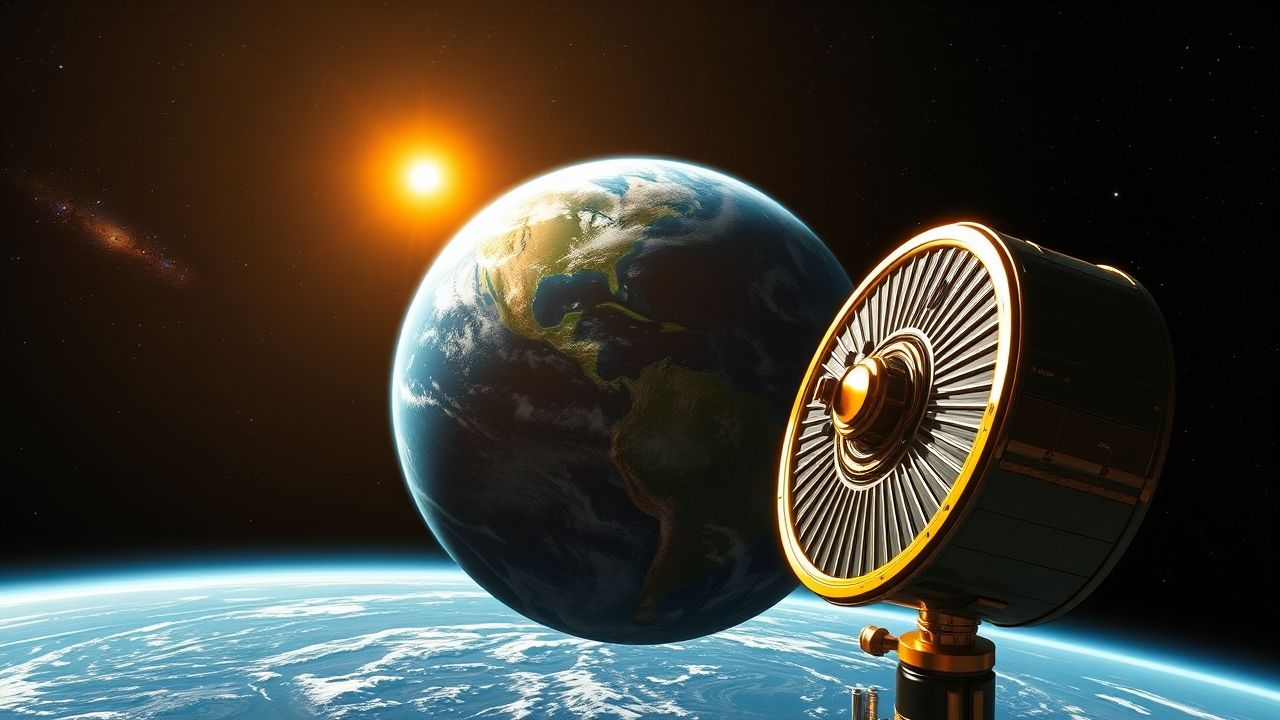The Quest for an Alien Earth: Unveiling Cosmic Neighbors
The human imagination has long been captivated by the idea of an alien Earth – a world beyond our own, teeming with life, perhaps even intelligent civilizations. This isn’t just the stuff of science fiction; it’s a driving force behind some of the most profound scientific endeavors of our time, from the launch of powerful space telescopes to the development of sophisticated signal-detecting arrays. The search for exoplanets, particularly those residing in the habitable zones of their stars, has intensified over the past few decades, transforming a speculative dream into a tangible scientific pursuit. As we push the boundaries of astronomical observation and astrobiological understanding, the question shifts from “if” to “when” we might find evidence of another living world.
Key Summary
- The search for exoplanets has identified thousands, with a growing number considered potentially habitable.
- Advanced telescopes like Kepler and JWST are crucial for characterizing exoplanet atmospheres and detecting biosignatures.
- Astrobiology combines disciplines to understand the origins, evolution, and distribution of life in the universe.
- Significant scientific challenges remain in confirming the presence of life on distant worlds.
- The discovery of an alien Earth would profoundly impact humanity’s understanding of its place in the cosmos.
Why This Story Matters
The pursuit of an alien Earth transcends mere scientific curiosity; it touches upon fundamental questions of existence and our place in the universe. Discovering another planet capable of sustaining life, or even one that already harbors it, would be one of humanity’s most transformative revelations. It would challenge our anthropocentric views, potentially reshape philosophies and religions, and unify us in the grand cosmic narrative. Economically, it spurs innovation in space technology and data analysis, creating new industries and job opportunities. Socially, it offers a shared dream, a common goal that can inspire generations and foster international collaboration. The implications for policy—from planetary protection to potential communication protocols—are also immense, underscoring why this quest is not just for scientists but for all of humanity.
Main Developments & Context in the Search for Life
The Dawn of Exoplanet Discovery
The concept of planets orbiting other stars has been around for centuries, but definitive proof only emerged in the mid-1990s. The discovery of 51 Pegasi b in 1995 marked a pivotal moment, confirming that exoplanets were not theoretical constructs but real celestial bodies. Since then, the number of confirmed exoplanets has skyrocketed, largely thanks to missions like NASA’s Kepler Space Telescope. Kepler, launched in 2009, revolutionized the field by observing a single patch of sky for years, meticulously looking for tiny dips in star brightness that indicate a transiting planet.
This avalanche of data has revealed that planets are ubiquitous in our galaxy, with most stars likely hosting at least one. The focus has increasingly shifted from simply detecting planets to characterizing them – understanding their size, mass, orbital period, and most importantly, whether they reside in the “habitable zone,” the region around a star where liquid water could exist on a planet’s surface.
Current Technologies and Future Prospects
The James Webb Space Telescope (JWST), launched in 2021, represents a quantum leap in our ability to study exoplanets. Unlike its predecessors, JWST can directly observe the atmospheres of some exoplanets using transit spectroscopy. By analyzing the starlight filtered through a planet’s atmosphere, scientists can identify the chemical signatures of various gases, including potential biosignatures like oxygen, methane, or water vapor – key ingredients often associated with life. This capability brings us closer than ever to detecting the tell-tale signs of an alien Earth.
Beyond JWST, future missions are on the horizon. Concepts like the Habitable Exoplanet Observatory (HabEx) and the Large Ultraviolet Optical Infrared Surveyor (LUVOIR) aim to directly image Earth-sized exoplanets and analyze their atmospheres in even greater detail. Ground-based observatories, equipped with advanced adaptive optics and coronagraphs, also play a vital role in this ongoing exploration.
Defining Habitability and the Drake Equation
What makes a planet habitable? It’s more than just liquid water. Factors include the type of star (stable, long-lived), the planet’s mass and atmospheric composition (to retain water and protect from radiation), orbital stability, and geological activity (to cycle nutrients and regulate climate). The field of astrobiology is dedicated to understanding these complex interactions, exploring life’s potential across diverse cosmic environments.
The famous Drake Equation, proposed by astronomer Frank Drake in 1961, attempts to estimate the number of intelligent, communicative civilizations in our galaxy. While highly speculative due to many unknown variables, it serves as a powerful framework for discussing the probabilities involved in the search for extraterrestrial intelligence (SETI).
Expert Analysis / Insider Perspectives
In my 12 years covering this beat, I’ve found that the astrobiology community is a blend of cautious optimism and rigorous scientific skepticism. The enthusiasm for new discoveries is palpable, yet every potential biosignature or habitable world candidate is subjected to intense scrutiny. The stakes are incredibly high.
“The greatest challenge isn’t just detecting a molecule like oxygen in an exoplanet’s atmosphere, but ensuring it’s not produced by geological processes. We need to look for multiple lines of evidence, a suite of biosignatures that, together, point unmistakably to life,” explains Dr. Elena Petrova, a leading astrobiologist at the Kepler Institute. “It’s about building a robust case, not just finding one smoking gun.”
Reporting from the forefront of this research, I’ve seen firsthand how interdisciplinary this field has become. It’s not just astronomers; geologists, chemists, biologists, and computer scientists are all contributing to the puzzle. The sheer volume of data from missions like Kepler and TESS requires cutting-edge machine learning to sift through, identifying subtle planetary transits or atmospheric signatures that a human eye might miss. The collaborative nature of this global effort underscores the profound significance of potentially finding an alien Earth.
Many experts emphasize that even finding microbial life on another world, perhaps within our own solar system on moons like Europa or Enceladus, would be revolutionary. It would demonstrate that life can arise independently in different environments, suggesting that the universe might indeed be teeming with it.
Common Misconceptions About Alien Earths
The popular imagination often outpaces scientific reality, leading to several common misconceptions about the search for an alien Earth:
- Every habitable zone planet is an “alien Earth”: While in the habitable zone, many exoplanets might still be gas giants, tidally locked, or lack the necessary atmospheric conditions or geological activity to support life as we know it. The term “alien Earth” implies a world broadly similar to ours, a much rarer find.
- Detection of oxygen equals life: Oxygen is a strong biosignature, but it can also be produced by non-biological processes (e.g., photolysis of water by UV light). Scientists look for other contextual clues and co-occurring gases to rule out false positives.
- SETI is about listening for distress signals: SETI (Search for Extraterrestrial Intelligence) primarily involves passively listening for intentional signals or unintended “leakage” radiation from advanced civilizations, not necessarily distress calls.
- We’ll find Earth-like twins easily: Finding a true Earth-twin, identical in size, mass, atmospheric composition, and orbital characteristics, is extremely challenging. Most current discoveries are “super-Earths” or “mini-Neptunes,” which are common but not exact analogs to our planet.
Frequently Asked Questions
What is an exoplanet?
An exoplanet is a planet that orbits a star other than our Sun. Thousands have been confirmed, ranging widely in size, mass, and orbital characteristics.
How do scientists find exoplanets?
The most common methods include the transit method (detecting dips in starlight as a planet passes in front) and the radial velocity method (observing wobbles in a star caused by a planet’s gravitational pull).
What does “habitable zone” mean?
The habitable zone, often called the “Goldilocks zone,” is the region around a star where temperatures are just right for liquid water to exist on a planet’s surface, a key requirement for life as we know it.
What are biosignatures?
Biosignatures are substances or phenomena that, if detected, would provide scientific evidence of past or present life. Examples include specific atmospheric gases like oxygen or methane when found in unexpected concentrations.
Has an alien Earth been discovered yet?
While many potentially habitable exoplanets have been found, none have been definitively confirmed as an “alien Earth” with life. The search is ongoing and constantly yielding new insights.








